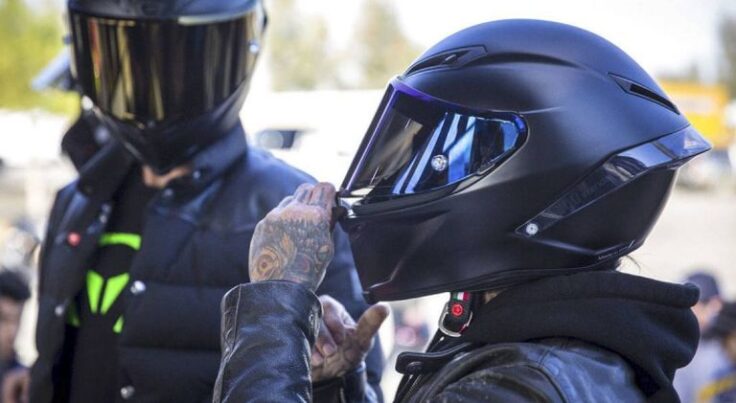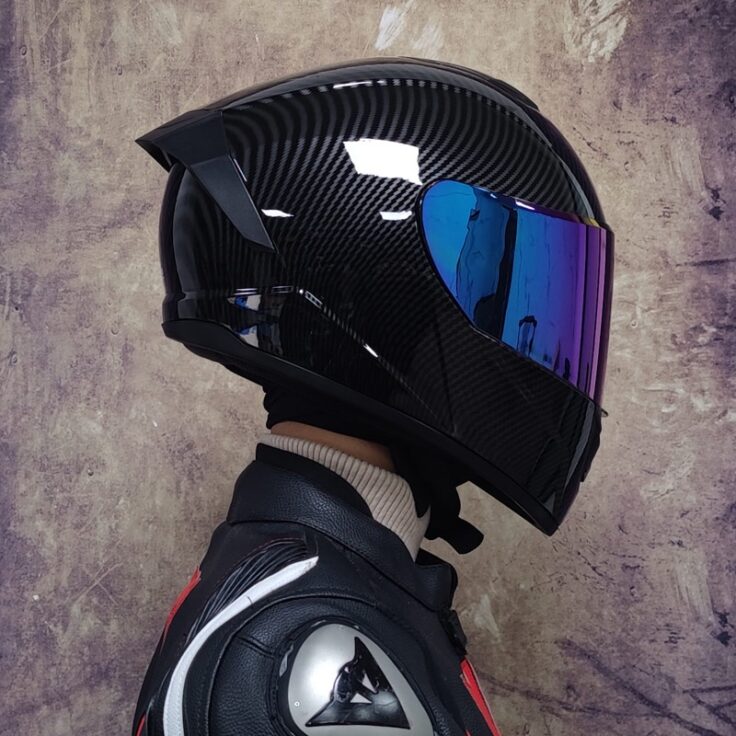On the long and winding road, rider safety must come first. You can only imagine what life-threatening dangers lie ahead, especially for an open, two-wheeled vehicle such as a motorbike. So to uphold maximum protection and precaution down the highway, it is a golden rule to make motorbike helmets your constant companion for every ride.
You may know their importance from road laws, but can you grasp precisely how helmets work and how they protect you? Or do you only get a seemingly good-looking one without examining its specs and just hope for the best? If you are a new rider looking to buy your first-ever helmet, here are eight things to know about motorbike helmets before you buy one:
How Helmets Work

Essentially, your helmet takes the hit for you in the event of a collision. It is a wearable barrier that prevents any impact from severely damaging your head by dispersing the force over the helmet’s surface area. Additionally, the robust material also absorbs and deflects some impact force.
Among its several parts, the outer shell and impact-absorbing liner are at the forefront of dispersing and absorbing the impact force. Meanwhile, inside is the comfort padding to fit the helmet snugly on your head. And it is the chin strap that keeps it in place and ensures that all sides of your head are well-covered and protected.
Types of Helmets

As with motorbikes, there are also several types of helmets. They have varying pros and cons and differences in appearance, fit and comfort, purpose, and level of protection. So it is crucial to know what works best for you when purchasing one!
For both head and face protection, according to Cully’s Yamaha, motorcycle helmets built full-face are the best choice. Meanwhile, an open-face helmet may work best if you want lighter and more ventilated headwear. For riding in low-risk and shorter distances, you may opt for a half-helmet. Of course, always check with local ordinances about helmets.
Helmet Standards and Certification
Manufacturers need to acquire certification before putting their products on the market. Naturally, the standards revolve around safety against grave head injuries and brain trauma. So never compromise and only buy legitimately certified motorbike helmets legally on sale.
The most common and internationally-used helmet certifications are the UNECE and Snell Certification. They have rigorous criteria that emphasize impact absorption, so look for these certifications and ensure that your headgear is up to the current standards!
Procedures for Helmet Testing

If you want to dig deeper into the standards of a functional helmet, you might want to check out its various testing mechanisms. To help you gain peace of mind knowing that you are safe and sound down the highway, do your research on the extensive and exhaustive procedures for helmet testing.
One assessment that comes to mind may be a drop test to examine impact absorption and the ability of the helmet to stay intact in the event of a collision. Examiners also do a roll-off test to assess its general fit and position on a human head. Finally, examiners also condition the helmets by exposing them to varying temperatures—hot, cold, wet, and dry.
Helmet Laws

Road safety and helmet use are a matter of life and death. With the number of accidents and lives lost every year, most authorities rightfully impose much-needed laws for wearing standard protective motorbike helmets on all rides—and naturally, you have to know them all!
Many countries all around the globe have a law on the mandatory use of protective headgear for motorbike riders. Some are even more comprehensive, requiring not only the rider but also the passenger to wear a helmet. Failure to follow such may result in a monetary fine.
Proper Helmet Storage
When riding a different mode of transportation, it is essential to store your helmet in the right place and in the proper manner. If not, unnecessary tears and damages may arise. Remember that cheap helmets are not easy to come by, so always exercise adequate helmet storage.
Place your protective headgear at an elevated but safe enough place so that it is out of reach but will not easily fall and break. If you have the budget, you may buy a helmet bag to keep dust and particles out of the way. Most importantly, avoid storing it in a hot and humid place for excessive moisture may damage the protective, impact-absorbing liner of the helmet.
How to Know the Perfect Fit for a Helmet
A loose helmet is no functional helmet at all. As your life and safety are on the line, getting a protective headgear that sits snugly on your head is crucial to avoid further accidents and mishaps. So before buying a helmet, know the perfect fit for your head! But how exactly? How do you know if it is too loose or too tight?
The first thing to consider is the helmet’s retention system. When trying it on, fasten the chin straps and, grabbing the helmet’s top edge with your hand, try to roll it off your head—it is fitting if it stays in place and too loose if it comes off! Also, measure your head size at its largest circumference to determine a good starting point in defining your actual helmet size.
How Important Helmets Are

With all things said, it is imperative to instill in every rider’s mind that helmets are very important and their use is a matter of life and death. It reduces your risk for lethal head injuries and provides many more benefits aside from safety that riders often overlook.
Research constantly backs the protective element of helmets, which is at a 69% head injury reduction rate. Wearing a helmet also saves you money from fines and helps you concentrate and be more conscious of your surroundings when driving. Also, a helmet increases your conspicuity and lessens the risk of collisions over not being seen by other riders.
Final Thoughts
There are many things to know about motorbike helmets to achieve the best road protection for riders. The eight ideas discussed above are an excellent starting point for understanding how such safety equipment works, so employ the following in determining the most functional helmet to purchase and go on fun, safer joyrides in no time!

